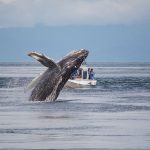Clam populations throughout Alaska have steadily declined for over 20 years, affecting subsistence, recreational and commercial harvesters. The exact causes of the decline are unknown. Suspected factors include habitat changes, environmental stressors, predation and, possibly, ocean acidification.
Under the supervision of University of Alaska Fairbanks assistant professor Amanda Kelley, PhD student Ashley Rossin is studying the effects of ocean acidification on littleneck clams and cockles, two species harvested for subsistence across the state. Both Kelley and Rossin are with the College of Fisheries and Ocean Sciences.
With funding from Alaska Sea Grant, they are examining the physiological effects on the clams in a laboratory setting, and then comparing them to environmental conditions in the field. Kelley and Rossin are also collecting data from citizen scientists across the state.
The team created a project on the app Epicollect5 to allow community members to post clam observations from the coasts using their mobile devices. Anyone walking along a beach can use the app to record their location, note what species they’re seeing, fill out information about the environment, and add images.
By collecting these observations, the scientists hope to gain a better understanding of current clam populations, and how those may change in future years. More information is on the project website: https://five.epicollect.net/project/clam-survey.
The public can view the current observations through the Epicollect5 project page, or see the updated list on the Local Enviromnent Observer (LEO) Network website. Read more about Kelley’s ocean acidification research: bit.ly/2Ne25dd






